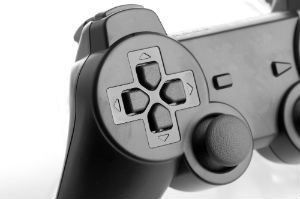Playing games is not only a fun for kids but for people of all ages. Games have been a part of human civilization since very beginning. Playing and winning games is addictive and can be successfully used in an organization to mix fun with work. A well designed enterprise gamification can make the work highly motivational and interesting for employees.
According to a report by Marketsand Markets, a U.S based global market research and consulting company – “Gamification Market is estimated to grow from $ 421.3 Million in 2013 to $5.502 Billion in 2018.” The report also suggests that “Gamification Market has significant potential that can change the dynamics of employee engagement, rewards and recognition and customer loyalty, globally”.
Imagine, how it would be, if your work felt quite similar to your favorite game! It is important to understand what makes work dull and games enjoyable and engaging. In games, the tasks are repetitive but full of fun, the goals are clear, rules are transparent, obstacles are intentional, and promotion to next level is strictly on merit basis. Same things apply to a job. However, the tasks at work are repetitive and boring, the goals are contradictory and vague, the rules are unclear and nontransparent, the obstacles are accidental, and promotion to the next level may be biased and based on favoritism.
Thus, there is a lot to learn from games. Simple game mechanics can be applied to work to redesign the mundane tasks and make the work environment more interesting and engaging.
Some examples of Gamification
Companies like SAP, Microsoft, Google, IBM, CISCO, Target, L’Oreal, and Canon are using gamification techniques to engage their employees and customers.
Target, a major Canadian retail chain has developed a Cashier game that checks the cashier’s performance and shows rating as Green/Yellow/Red rating system. The cashiers are supposed to scan items and collect payments. Any slowdown in cashier’s performance means long queues and angry shoppers’ checkouts.
The Cashier’s game displays a big G in the middle of the screen to indicate that the cashier has met the speed requirements for his/her transactions. The yellow and red color shows slow or no performance. It is a good system to keep cashiers working and the whole performance management system feels like a game and constantly tests employees for their performance.
Cannon provides training to its employees through gamification. The company uses virtual software that simulates a copier. The trainees drag and drop various parts to the virtual copier to learn the working and repair mechanisms of a copier.
Cisco has developed a simulation game called myPlanNet that allow users to learn business, technology, and the history and future of the Internet. The game puts you into the shoes of a service provider CEO and your mission is to manage your business as it evolves from the stone ages of dial-up, through the broadband and mobile connected eras, and into the dawning of the media net age.
Gamification is still an emerging concept and above given gamification examples do not suggest that you always need a gaming application to engage your employees. It only means that you can apply gaming concepts such as engagement, competition, and transparency to the range of processes used in your organization.








